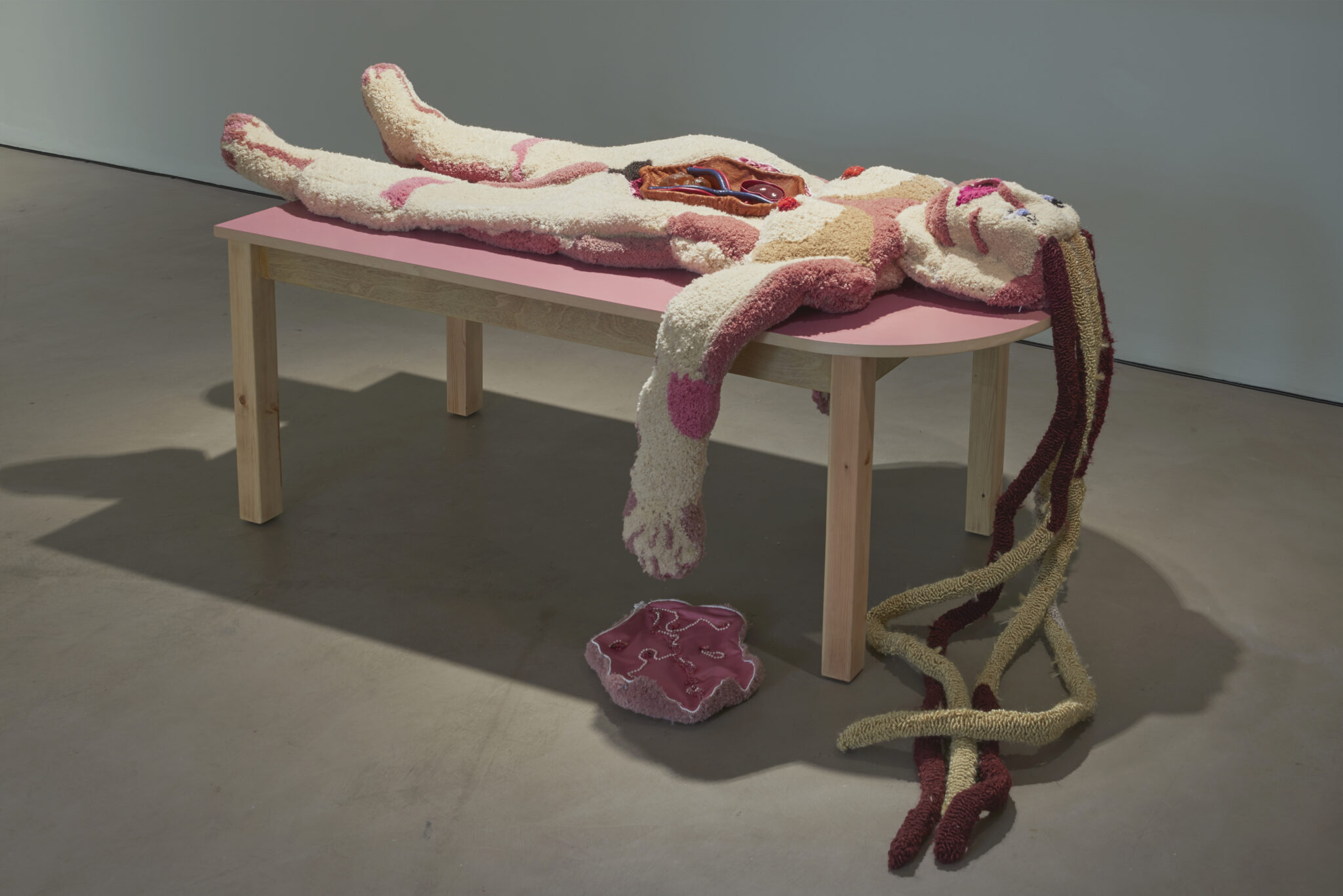
Photo by Andy Keate
Holes (2024) is the title of Anna Perach’s first solo show at Gasworks, London. A key exhibit is the tufted woollen body of a naked woman lying on a pink table, arms flopping over the sides, loose dreads hitting the floor and a belly unzipped to reveal kidneys, blood vessels and womb, with a glass foetus in the throes of becoming, all cradled in a leather pouch. Venus (2023) is inspired by the coloured wax anatomical figures of late 18th-century medicine that were used to study the interior organs, musculature and skeletal mechanisms of the human body, and the work is the start of an exploration of how the female body has been viewed in history, through the lens of scientific and religious patriarchy.
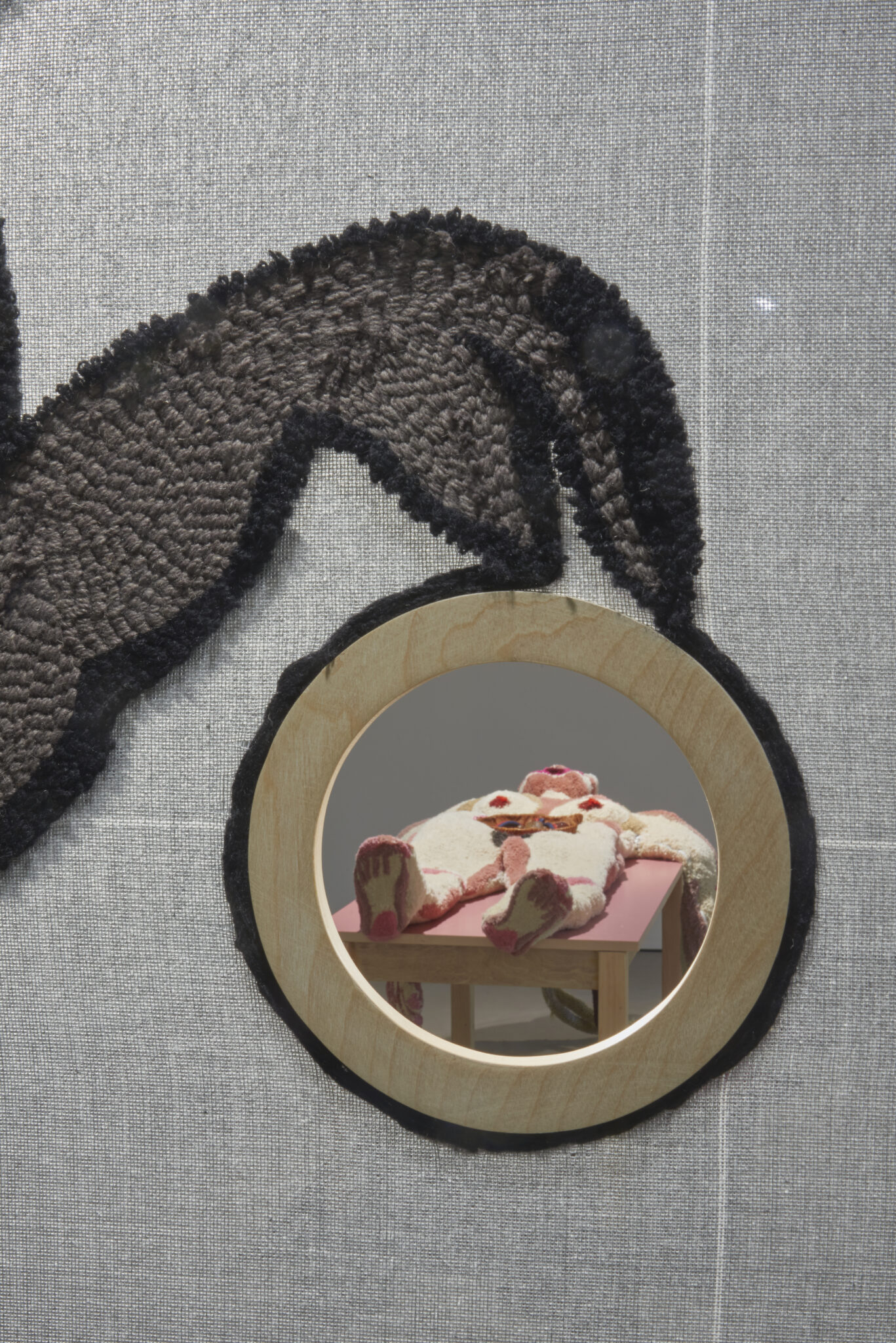
Photo by Andy Keate
In an interview, Perach describes how Anatomical Venuses evolved from a purely medical tool into a Western ideal of female beauty, “Almost like a sex doll or fetishistic object,” she says. Martin Kemp, curator of Spectacular Bodies (2000) at the Hayward Gallery, an exhibition that looked at anatomical figures from the Renaissance onwards, affirms that these Venuses had as much to do with aesthetics and theological understanding as with medicine. They were made in order to disclose ‘the divine architecture’ of the summit of God’s creation: man, while the wax simulacra were the work of trained artists at a time when the arts and sciences were closely allied.

The Axminster carpet yarn Perach tufts to build her Venus, combined with its booty of silk, leather, and glass, makes the work inherently tactile; you want to remove the organs, feel them, play with them and recall the ingenuity of a body’s design, at how much is exquisitely packed into so small a space. Yet, these pliable textile materials – so very different from the sheen and solidity of coloured wax – are also far removed from the flesh and bone of female anatomy.
When I first encountered Venus, I was reminded of another life-size textile woman, this one commissioned by the artist Oskar Kokoschka. Following the break-up of his relationship with Alma Mahler in 1914, the obsessive painter sent Alma’s precise measurements and other physical and erotic details to avant-garde doll-maker Hermine Moos to make him a substitute. He sent instructions in his letters, likening the dollmaker’s task to an act of magic:
“If you are able to carry out this task as I would wish, to deceive me with such magic that when I see it and touch it, I imagine that I have the woman of my dreams in front of me, then dear Fräulein Moos, I will be eternally indebted to your skills of invention and your womanly sensitivity…”
On delivery in 1919, he was disappointed to find that his ‘Silent Woman’ as he called this second Alma, was all fake fur and swan feathers, as unhuman to the touch as was imaginable:
“The outer shell is a polar bear pelt, suitable for a shaggy imitation bedside rug rather than the soft and pliable skin of a woman. […] The result is that I cannot even dress the doll … Even attempting to pull on one stocking would be like asking a French dancing master to waltz with a polar bear.”
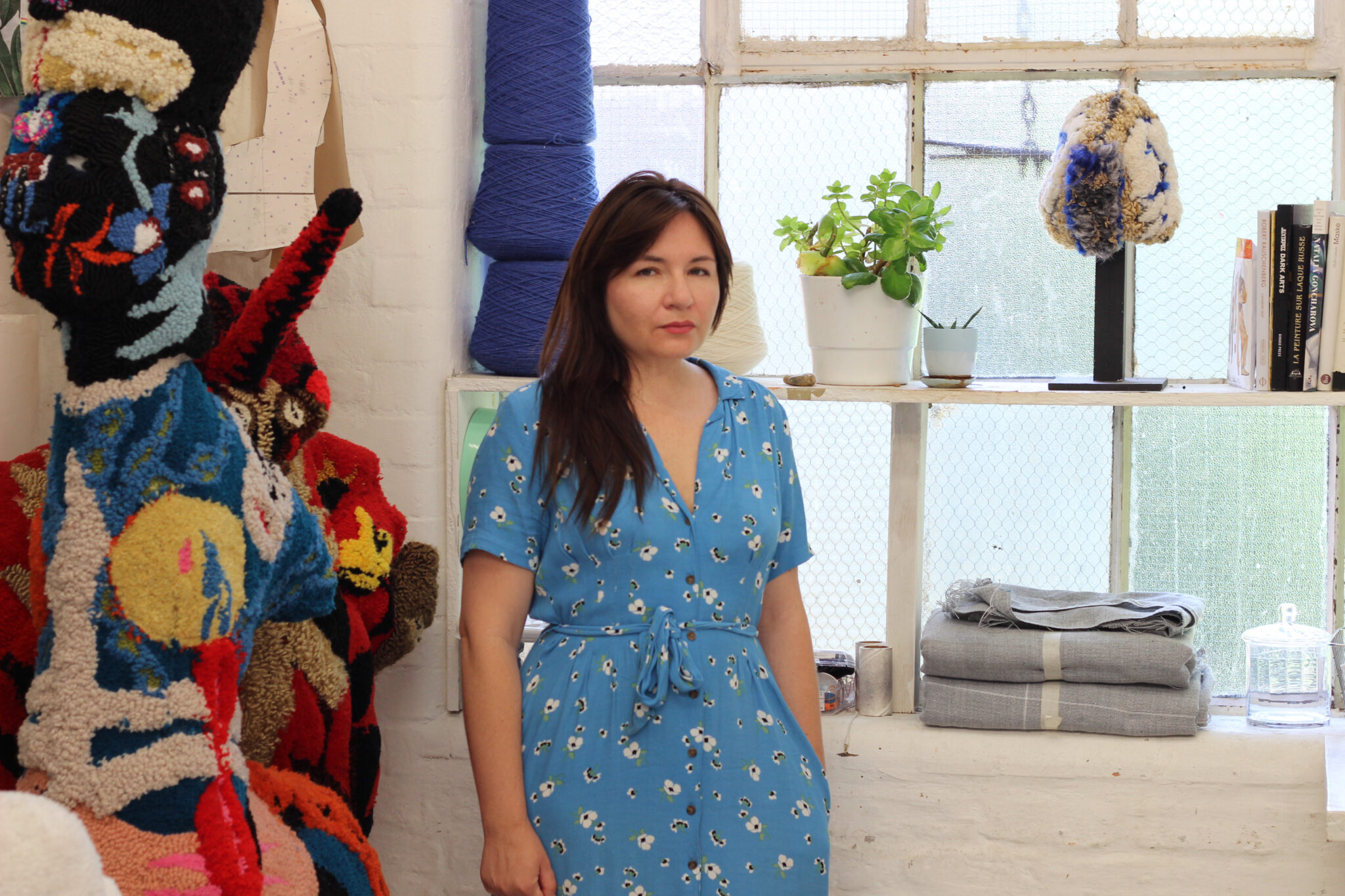
Anna Perach’s Venus thus belongs to a long line of human surrogates found in mythology, literature, and the visual arts, as well as in more functional guises such as shop window mannequins, lay figures for artists and fetish sex dolls. I would have been interested to know the artist’s own feelings as she tufted her figure, orchestrating its growing presence. She admits that her work can make people uncomfortable. “Discomfort comes from this blurriness of inside and outside…a lot of the work has the potential to draw you in [and] expel you […] it invites you to that experience.” Inbetween-ness – animate and inanimate – a sculpture that can be worn like a garment, is part of this ambiguity.
The in-out movement of the carpet yarn and the tufting gun chime with the gestural movements found in Ecstasies, a series of performances that take place in the gallery alongside the exhibition. In these, Venus (described by Perach as an empty skin) is animated – or ‘activated’ by the ministrations of three attendants dressed in body stockings.
Ecstasies conjure a witches’ sabbath, the dark night when novices dance naked with their hair down in readiness to meet the devil. Ritual – be it from witchcraft or the staged opening up of a human body in a Medieval anatomical theatre – is a recurrent theme in Holes.
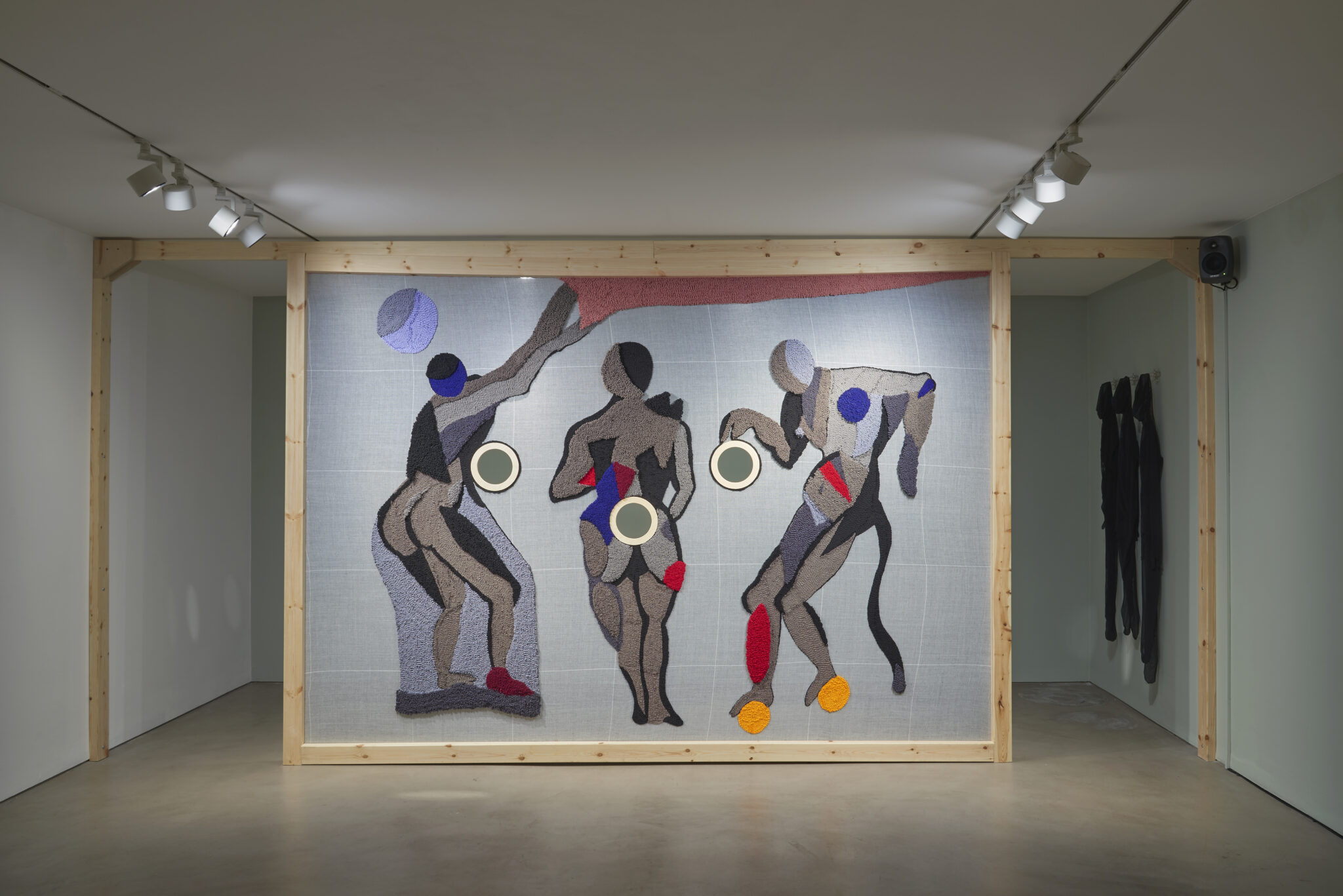
The first gallery, where Venus is situated, is divided into two sections by a screen depicting three dancing figures, Women From Outside (2024). There are holes in this screen through which hands appear to great effect during the performance. Hanging on the wall behind it are the dark gauzy bodysuits worn by the three performers, who unzip Venus to birth a fourth dancer who accompanies them to the witches’ sabbath in the second room.
Perach talks about the transition from medieval herbal medicine, as practised by women, to a medical system dominated by men. Wise women – often the village soothsayers and healers – were sometimes known as white witches. They included religious practitioners such as Hildegarde von Bingen, a German abbess who wrote Physica, a set of nine books that describe the scientific and medicinal properties of various plants, stones, fish, reptiles, and animals. Historical repression and the witch hunts that took place in continental Europe and later North America between the 15th and late 18th centuries led to thousands of trials for witchcraft and, according to Malcolm Gaskill in his essay, ‘The Fear and Loathing of Witches’ 80% of the suspects were women. For the societies of the time, the witch was an inversion personified, back-to-front and upside down. Women, with their leaky bodies, were considered unstable and, therefore, particularly vulnerable to temptation.
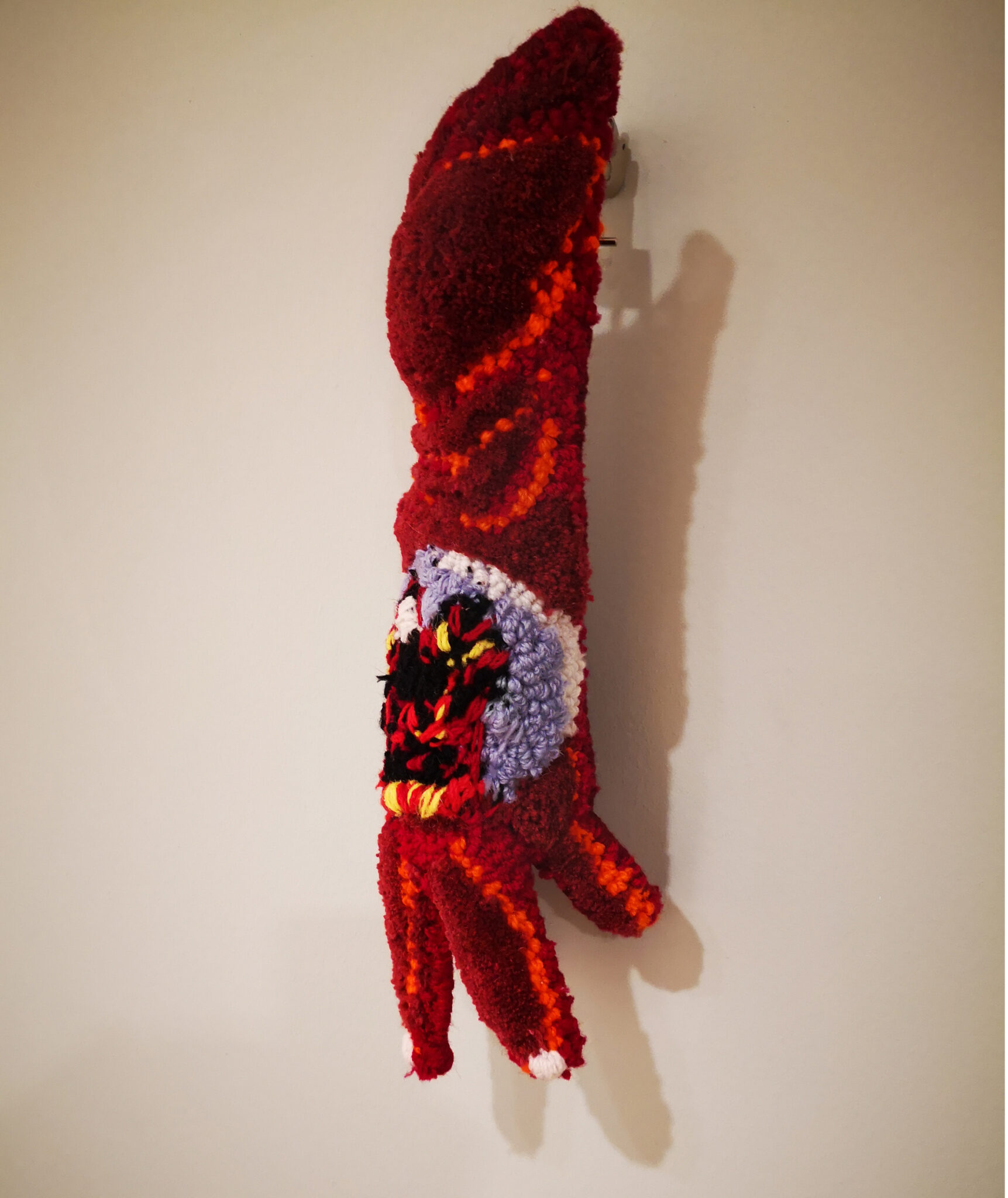
Suspended on the wall behind Venus is Glove (2023) more a gauntlet; rust-red, amber-veined, with fingernails stitched in white, it carries the promise of agency, of being worn. Could it become a Main de Gloire, the pickled left hand of a felon who died on the gibbet? Were it to grasp a candle made from the body fat of the corpse, would it render us all motionless before it? Glove is worn by a performer and used in the unpacking of the organs from Venus. It feels lewd and an intrusion. Glove has a visual twin in Louise Bourgeois’ Hand (2001) the hand that makes, holds, caresses, and slaps. By donning Glove or Venus or Skins, the wearer is transformed and becomes the artwork and the gallery becomes a place of ritual.
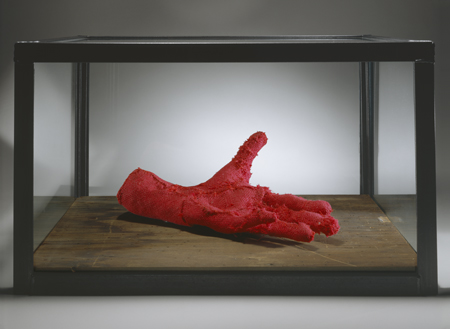
Photo by Christopher Burke
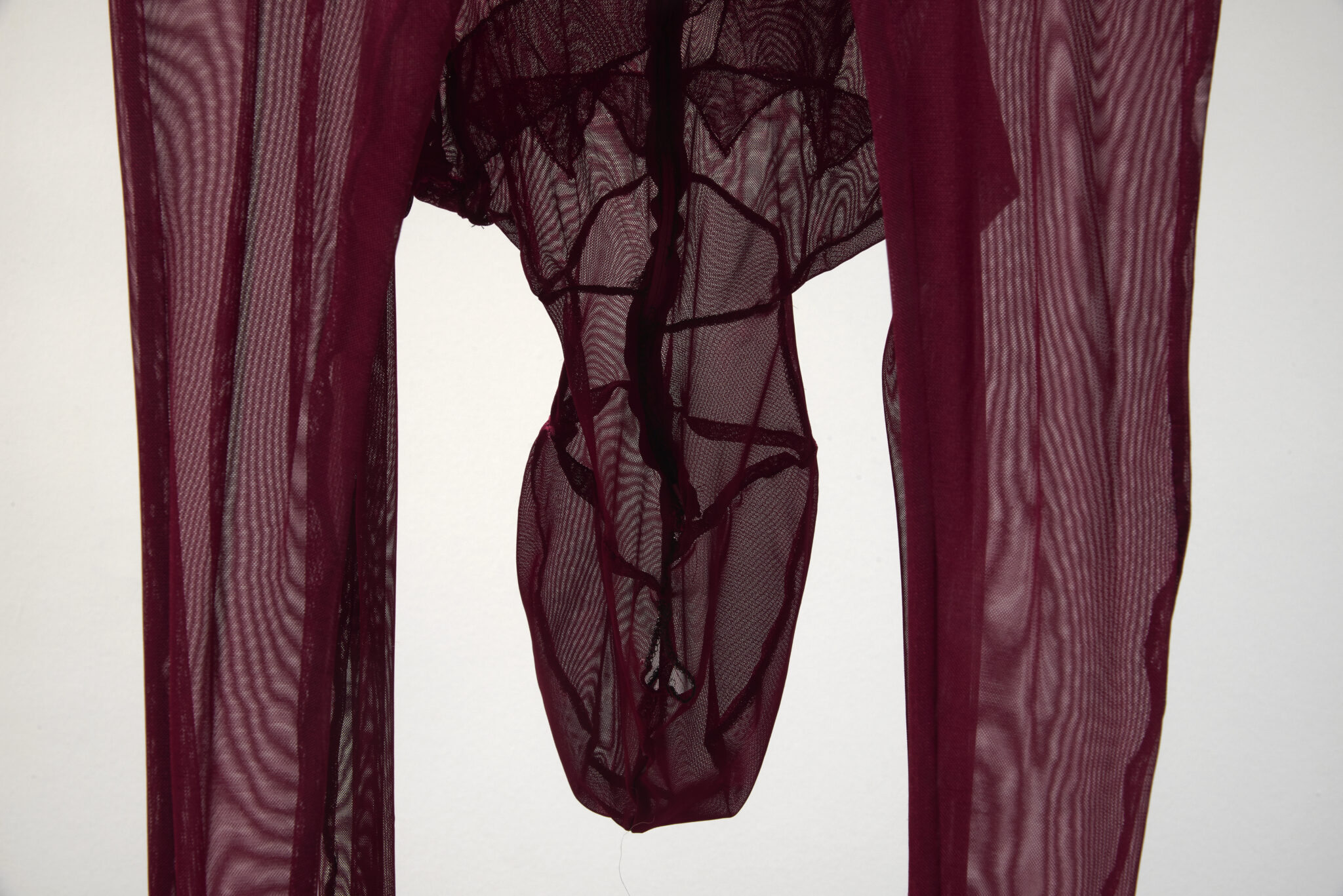
Photo by Christopher Burke
The ritual of something being made or systematically undone and destroyed or exploited is found in the enigmatic second gallery, where objects are laid out to represent a map of the human body. Extraction (2024) is an ersatz cranium made up of alien lifeforms, mono-tentacled with poisonous-looking glass tails suspended from a carousel; Assembly Line (2024) is a representation of a torso with arms and legs tufted on a wooden pine framework, while Assimilation Container (2024) is a tufted blood red bath, a possible womb. These are industrial-sounding titles for a mysterious rite that might be characterised as, “Everything that was meant to remain secret and hidden has come into the open”, Freud’s definition of the Uncanny (borrowed from Schelling).
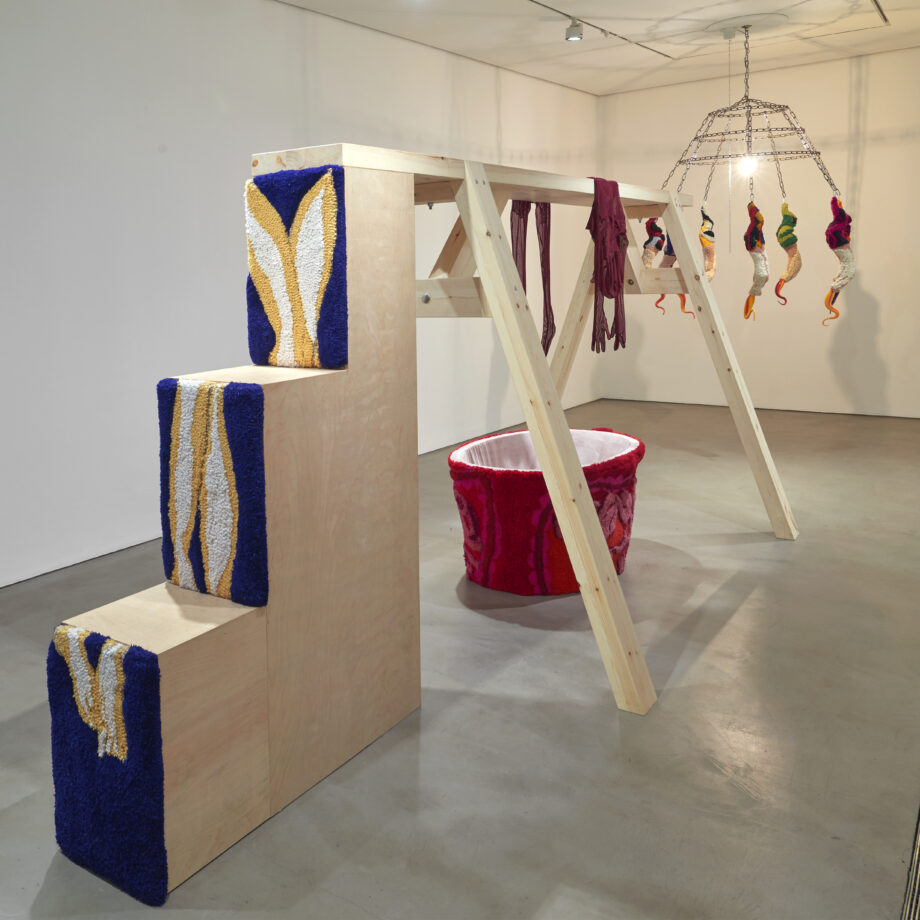
Photo by Andy Keate
In this gallery, the performers party, moving together as one organism in a bellyful of sound. Holes deals with topical themes from an unusual angle, expressed in the equally on-trend medium of textiles, here using carpet yarn, a less finessed method of making. Like many working in the field today, Perach has expanded her sculptures to include a performative element and a soundscape. Her work aligns with that of Louise Bourgeois and Monster Chetwynd, sculptures that move between the past and the present.
Written by Deborah Nash
Anna Perach Holes is at Gasworks, 155 Vauxhall Street, London SE11 5RH until 28th April 2024.
find out more




